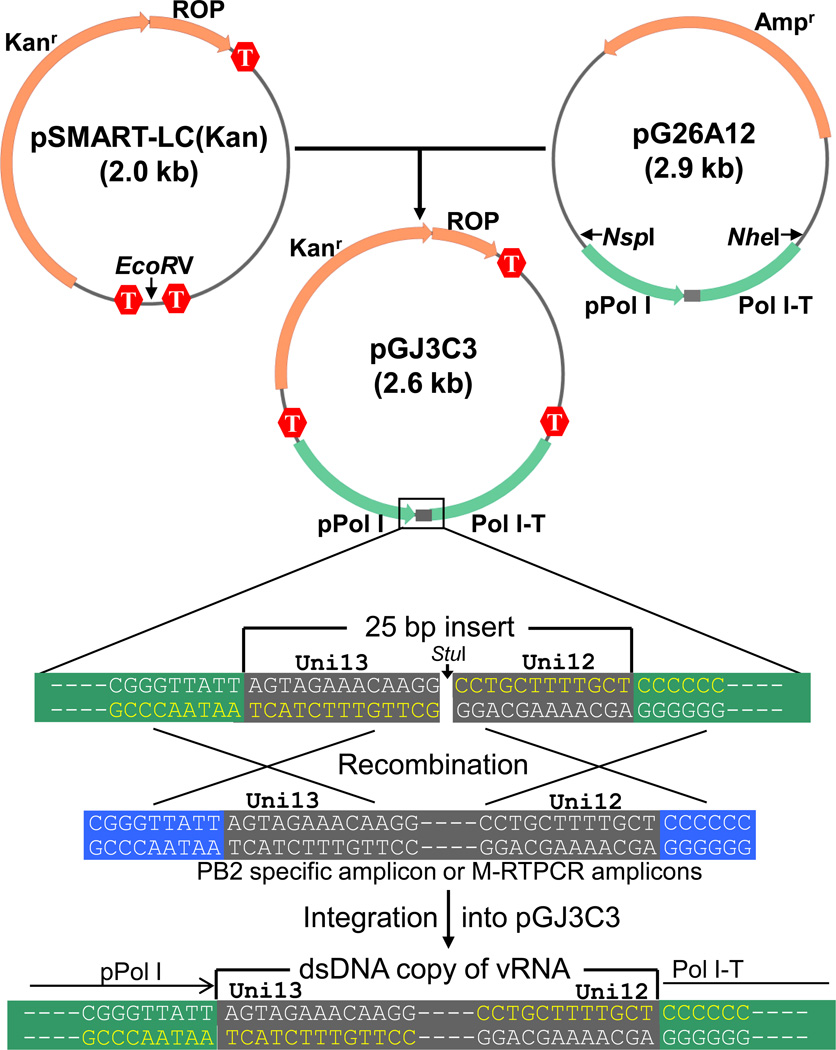Fig. 3.
Generation of recombination-based low-copy reverse genetics plasmid to clone unstable influenza A virus genes. The recombination-based reverse genetics plasmid pG26A12 (Zhou et al., 2009) has a 25 bp linker (Uni13 + Uni12, see text) between the RNA polymerase I promoter (pPol I) and terminator (Pol I-T) that was designed for In-Fusion cloning of any influenza A virus gene segment. The region containing the Pol I promoter and terminator were excised from pG26A12 by digestion with NspI and NheI, blunt-ended by mung bean nuclease digestion, and ligated into the EcoRV linearized pSMART plasmid to generate pGJ3C3 plasmid. All influenza A gene segments have identical terminal sequences to the StuI linearized plasmid and can be cloned using this recombination-based method. M-RTPCR amplicons have a few additional nucleotides (introduced by primers, shown in blue background) flanking the influenza gene segments to improve recombination efficiency. When amplifying a specific gene segment, adding these same additional nucleotides to the gene specific terminal primers also increases the efficiency of this recombination-based cloning technique. T, prokaryotic transcriptional terminator; ROP, "Repressor of Primer" copy number gene; Kanr, kanamycin resistance gene; Ampr, ampicillin resistance gene.

